Let’s talk about something that confuses many beginners. What’s the real difference between a serger vs sewing machine stitch?
When I first started sewing, I kept hearing people say, “You need a serger for clean edges!” or “You can fake it on your sewing machine!” And I was like… Wait, what? Aren’t they both just stitching fabric?
Well, kind of, but not really. The real difference between is,
Serger Vs Sewing
A serger trims, sews, and overlocks fabric edges in one pass for a professional finish, while a regular sewing machine stitches seams without trimming or fully enclosing the edge.
Still confusing? I know, so let’s get into the details with it , like flatlock vs overlock.
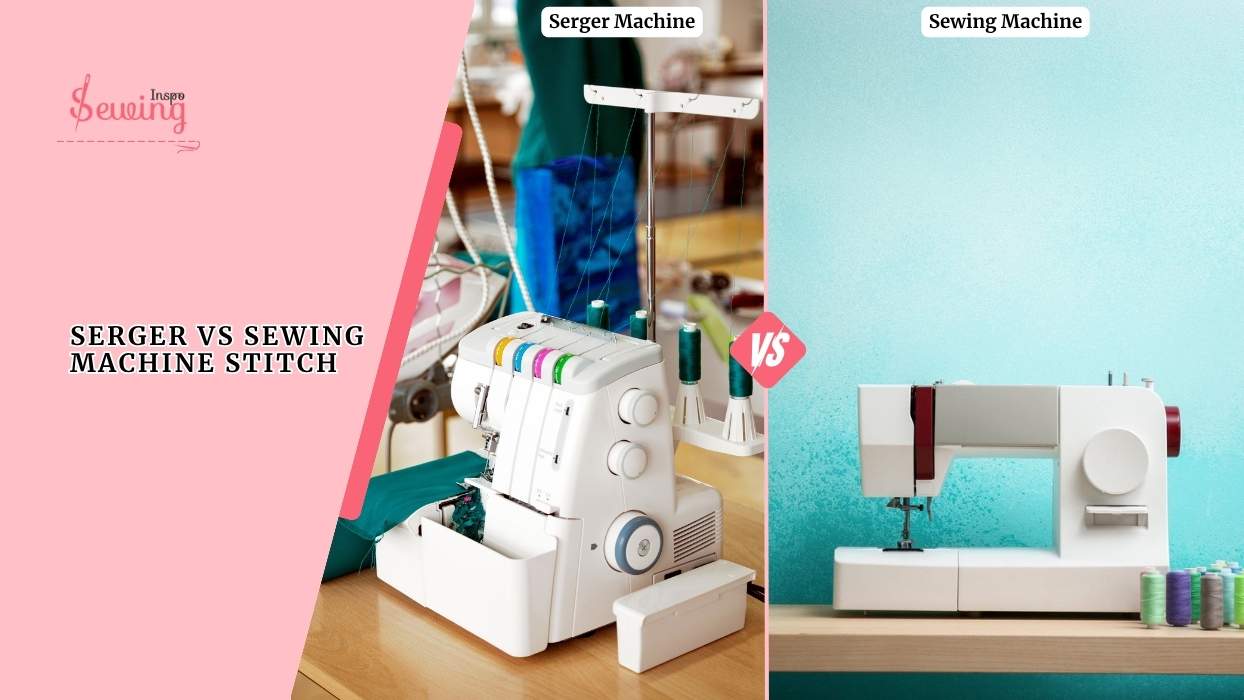
Table of Contents
Serger Vs Sewing Machine Stitch
The main difference between a serger and a sewing machine comes down to what they’re designed to do.
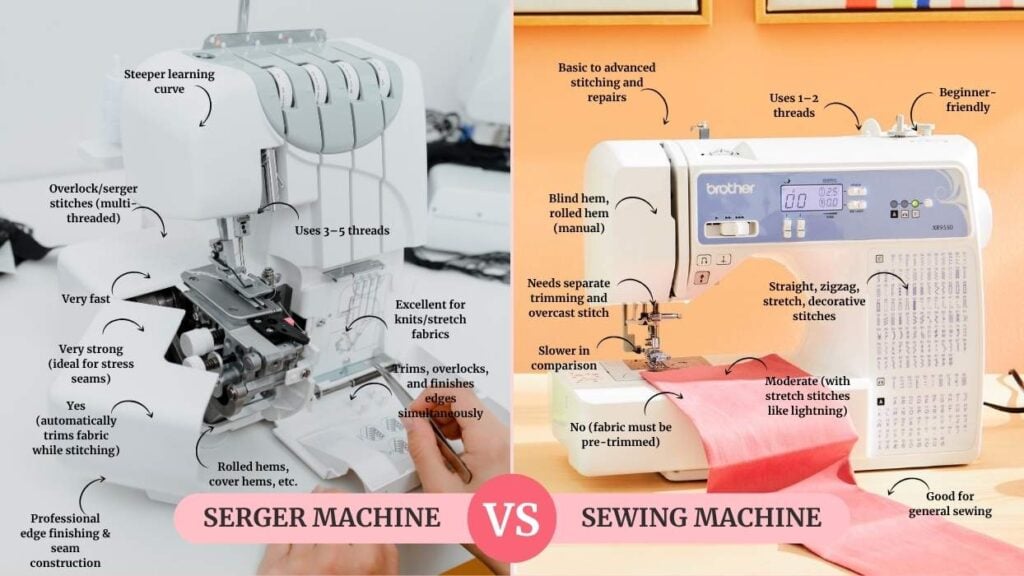
A sewing machine creates stitches that hold fabric pieces together. It is perfect for basic seams, hems, and topstitching. A serger (also called an overlocker), on the other hand, is a specialist. It trims the fabric edge, wraps the seam in thread, and gives a clean, stretchy, professional finish.
Rather than that, they also differ on many levels like serger vs overlock stitch,
| Serger (Overlock Machine) | Regular Sewing Machine |
| Overlock/serger stitches (multi-threaded) | Straight, zigzag, stretch, decorative stitches |
| Trims, overlocks, and finishes edges simultaneously | Needs separate trimming and overcast stitch |
| Uses 3–5 threads | Uses 1–2 threads |
| Yes (automatically trims fabric while stitching) | No (fabric must be pre-trimmed) |
| Excellent for knits/stretch fabrics | Moderate (with stretch stitches like lightning) |
| Very fast | Slower in comparison |
| Very strong (ideal for stress seams) | Good for general sewing |
| Steeper learning curve | Beginner-friendly |
| Rolled hems, cover hems, etc. | Blind hem, rolled hem (manual) |
| Professional edge finishing & seam construction | Basic to advanced stitching and repairs |
If you love comparing, then read about the lockstitch vs straight stitch sewing machine too.
Why Use A Serger Instead Of A Sewing Machine?
Your regular sewing machine is amazing. It can sew seams, create buttonholes, add decorative stitches, and handle most basic projects with ease.
But when it comes to finishing raw edges and working with stretchy fabrics? The serger machine is the best catch. Why? Well cause,
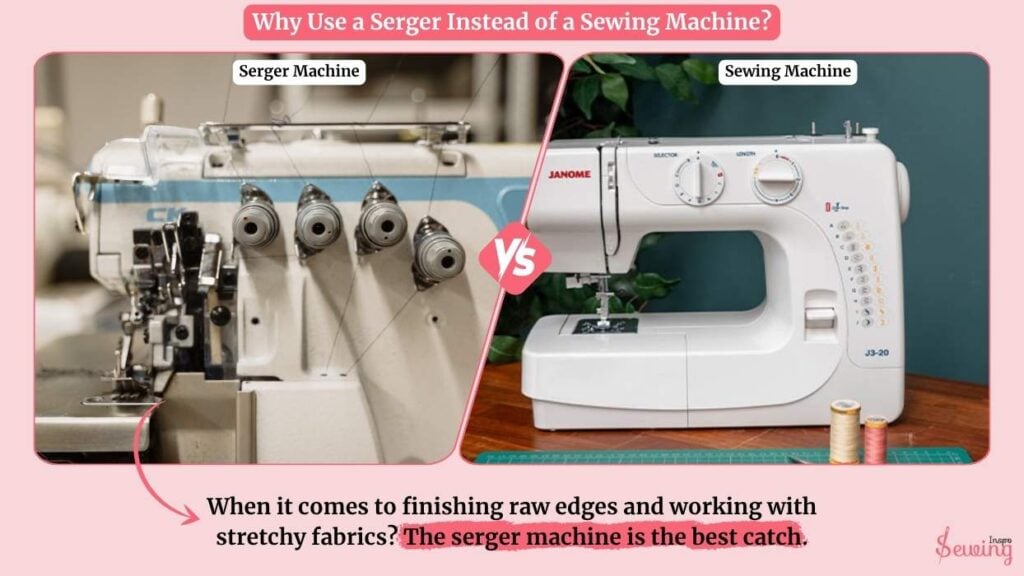
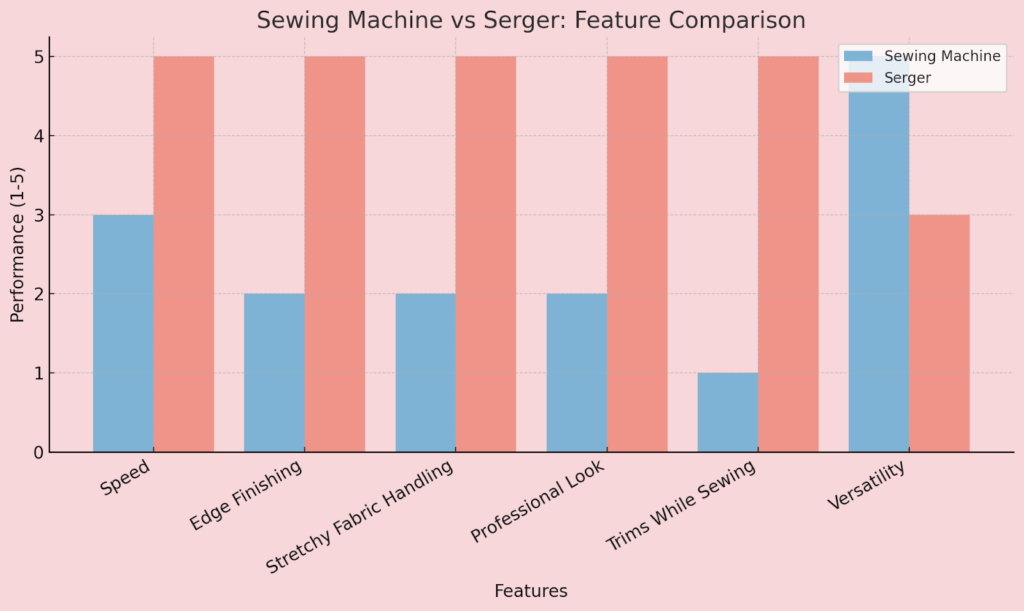
The serger machine wasn’t just faster, it looked professional. Clean, tight, stretchy seams that bounced right back. That’s because sergers are specifically designed for this purpose. They don’t just stitch. They trim, sew, and overcast all in one go. Super efficient. You can also use it as a sewing machine blanket stitch.
So, while your sewing machine is the everyday choice of stitcher, a serger brings that next-level finish, especially for knits, activewear, or anything you want to look and feel like it was store-bought.
Can A Regular Sewing Machine Do A Serger Stitch?
No regular sewing machine can do a serger stitch, but it can fake it pretty well. A regular sewing machine doesn’t have the blade or loopers that a serger does.
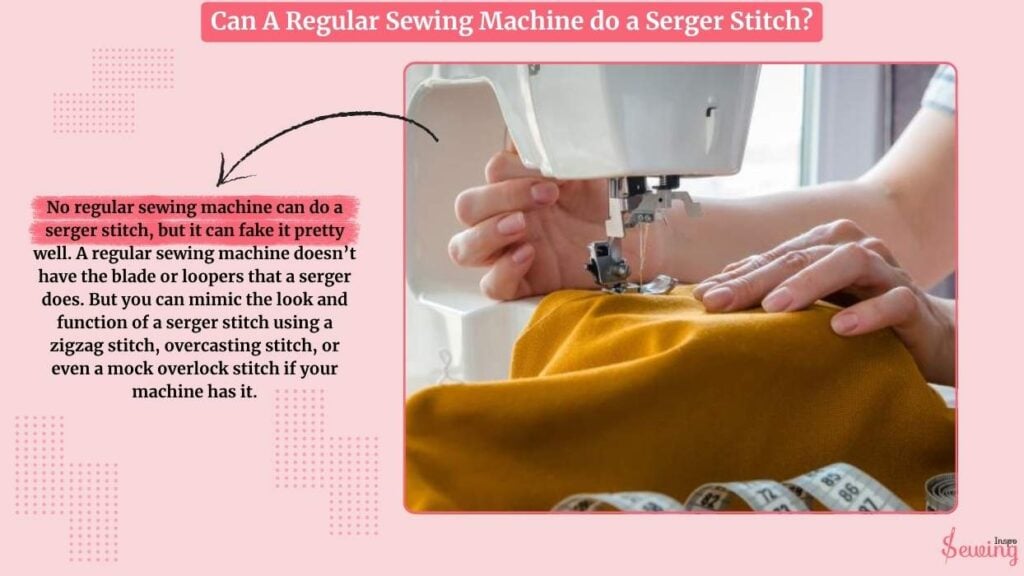
But you can mimic the look and function of a serger stitch using a zigzag stitch, overcasting stitch, or even a mock overlock stitch if your machine has it.
Serger Vs Sewing Machine Stitch Which Is Better?
The serger wins when it comes to a competition between them. Here’s why a serger stitch edges out the regular sewing machine:
- Sergers stitch way faster.
- Ideal for knitwear, athletic clothes, or anything that needs to move with you.
- This genius feature adjusts the feed to stop stretching or puckering.
- You get that clean, store-bought look without extra effort.
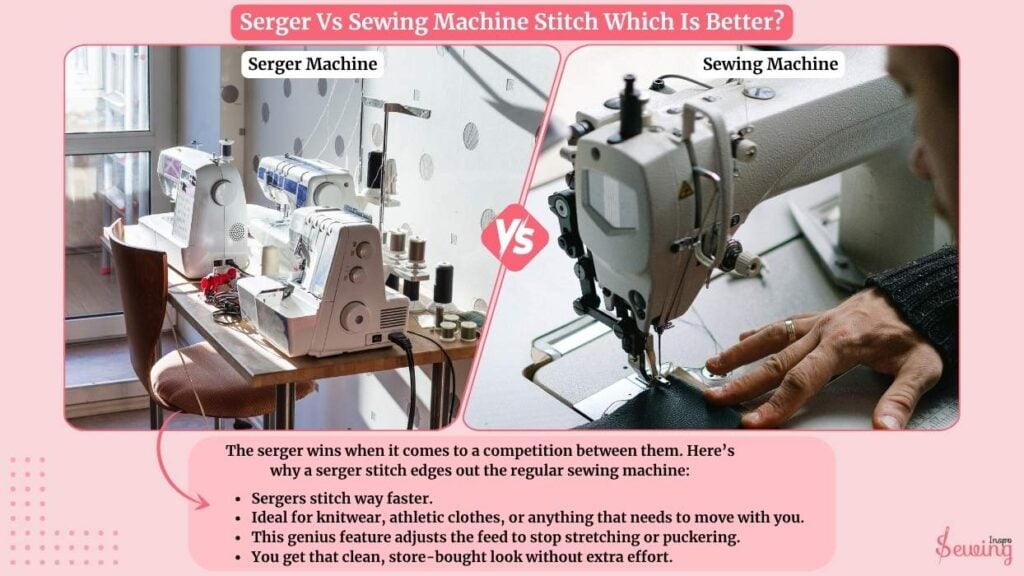
A sewing machine still holds its ground for topstitching, buttonholes, zippers, and a wide variety of specialty stitches. But when it comes to stitching strength, stretch, and edge finesse. The serger takes the crown.
If you wanna learn more comparisons like this, then read machine smocked vs hand smocked.
Frequently Asked Questions
Can I replace my sewing machine with a serger?
Not entirely. A serger is amazing for finishing edges and working with knits, but it can’t do tasks like buttonholes, zippers, or straight topstitching. You’ll still need a regular sewing machine for those.
Do I need both a serger and a sewing machine?
If you sew regularly yes. The sewing machine covers basics and detail work, while the serger speeds up your process and polishes the finish, especially on stretchy or woven fabrics.
Can a serger do everything a sewing machine can?
No. Sergers are powerful, but they can’t sew in the center of fabric, do fancy decorative stitches, or create buttonholes. They’re built for seams, speed, and stretch.
Conclusion
If you’re sewing simple projects, a regular machine has your back. But for stretch fabrics and pro-level seams, a serger wins hands down. I use both, and honestly, they make the perfect team.


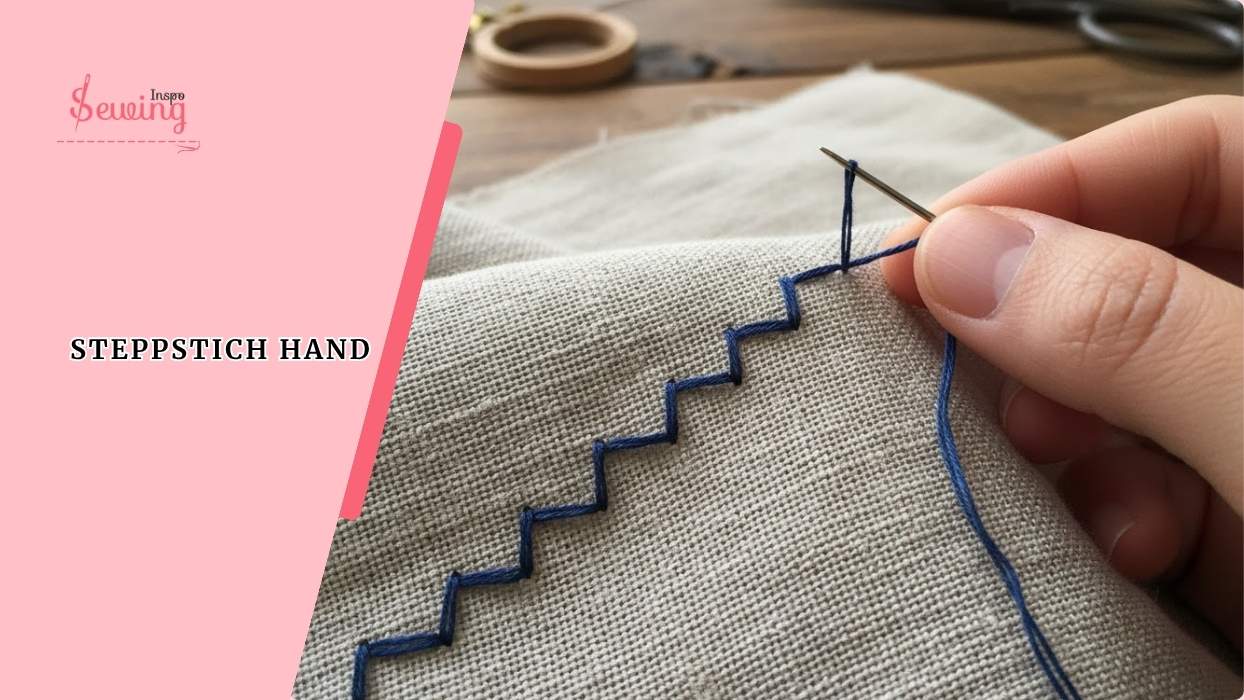
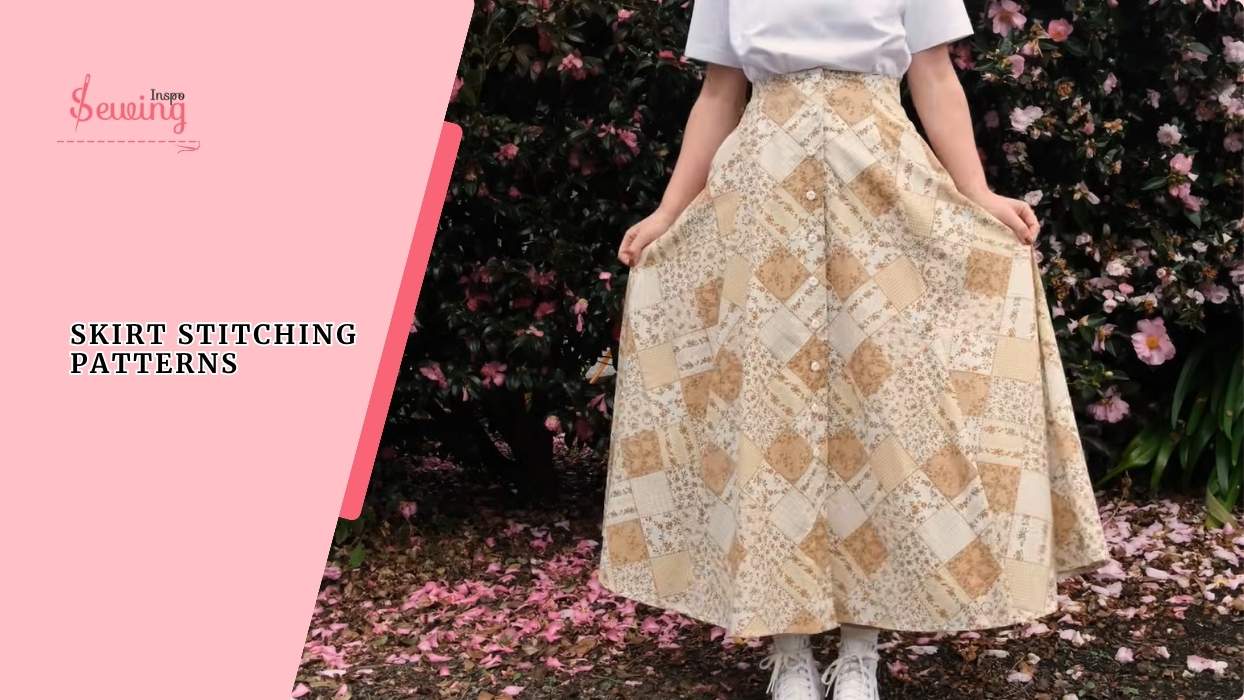
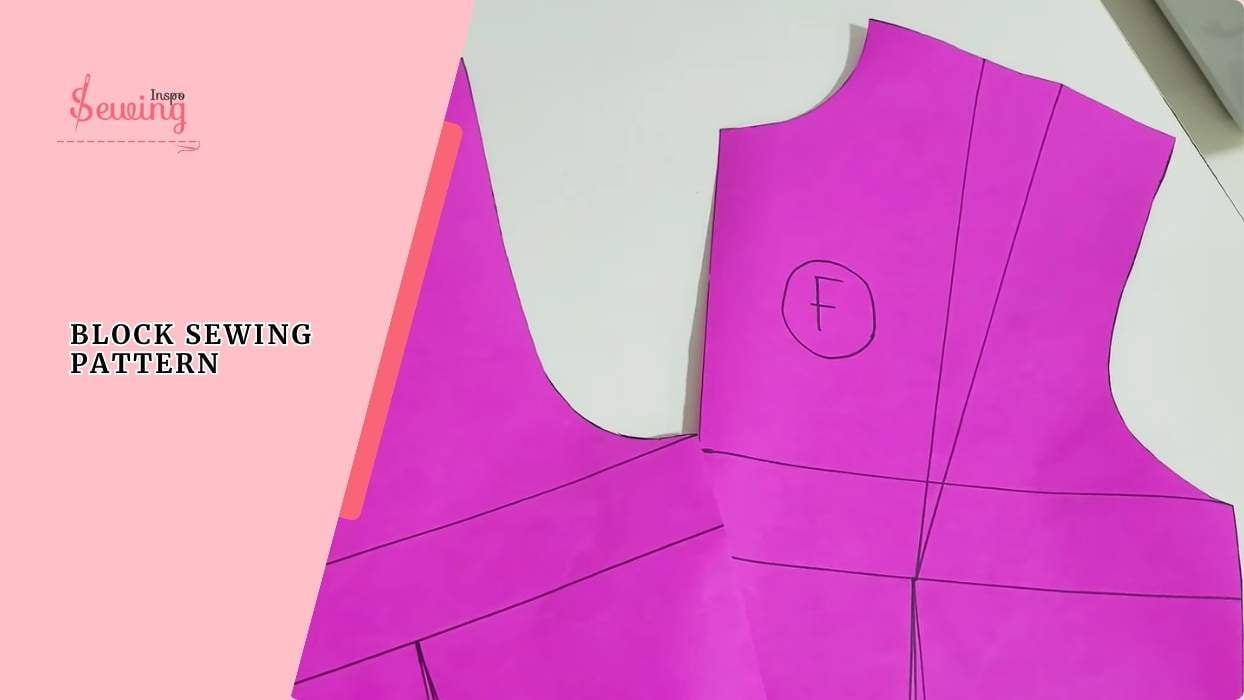
Leave a Reply